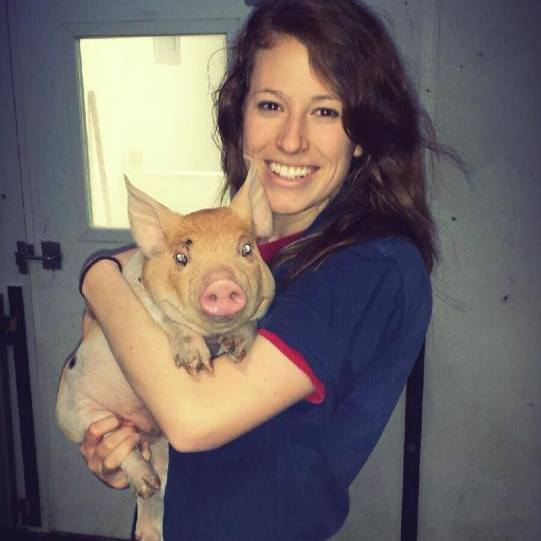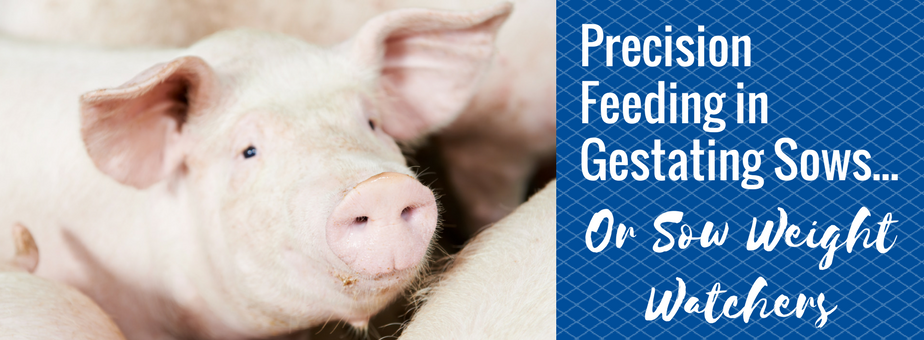
Feeding gestating sows is arguably one of the most important tasks within the sow farm. I know what you are thinking… anyone can feed a pig. And although this is likely true, if you want the best performance for your sow and her piglets, precision feeding is required.
So, what is precision feeding?! It’s quite simple really. You want to feed the gilt or sow just enough to meet her daily nutrient requirements. Over or underfeeding can negatively impact sow reproductive performance and longevity. Is she too skinny? Too fat? How do you know?!
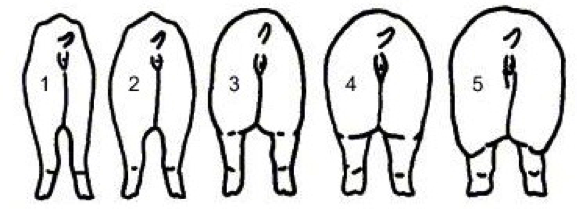
via MSU extension
The Problem with Body Condition Scores
Most swine producers evaluate gilts and sows based on body condition scores (BCS) and use these scores to then set feeding levels. The scores range from 1 to 5, with 1 being extremely thin and 5 being extremely fat (Figure 1). Females can be evaluated in individual stalls or pens. Producers evaluate females individually and increase or decrease set feeding levels with the goal of obtaining females with a BCS of 3 upon entry into the farrowing house.
The problem with BCS is they are subjective to the individual giving the score. For example, when I was working in production, I would walk through the gestation barn every 2 weeks with the breeding manager and he would stand behind the crate evaluating females and telling me (in front of the crate) to adjust the feed up or down. When he was out of town, I was behind the crate doing the evaluations. What if I called a sow a 5 when he would have called her a 4?
I was on a sow farm this summer and the same situation was occurring in pen gestation. What one may call skinny the other may call ideal. Generally, the extremes are the ones we can agree on (1’s and 5’s) but as you can imagine, this makes precision feeding a challenge. So, what can we do?
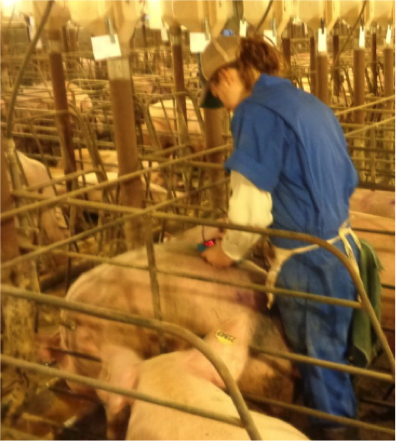
Backfat Measurements, Are They Realistic?
Backfat measurements can be used as another method for evaluating sow body condition. Backfat depth is measured at the P2 position (last rib, 7 cm from the center line of the back). The Lean-Meater (RENCO, Minneapolis, MN) is relatively inexpensive and is thought to provide a more objective method for determining body condition score. The greater the reading, the greater the backfat, the fatter the sow.
The challenge here is time. Obtaining sow backfat in a commercial sow farm takes time. To obtain an accurate reading, in an ideal world, the sows hair would be clipped and her skin would be free of fecal material, paint, etc. Get real! Sow farm crews are busy enough as it is, now you want to send the breeders out with a backfat probe? Not going to happen.
Although backfat measurements are an improvement to evaluating body condition in comparison to BCS, they must be done correctly and are too time consuming for producers to apply. So again, what can we do?
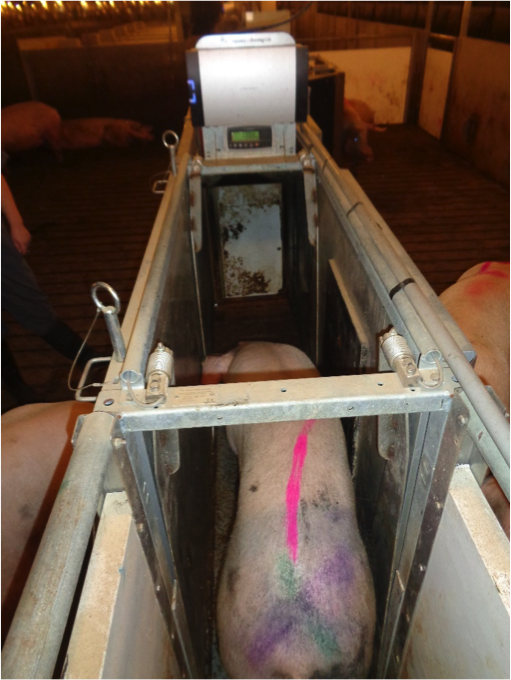
Weight Watchers Could Be the Answer!
Female bodyweight is another means for determining sow body condition. That’s right, weighing gestating sows! Just like us, we hop on the bathroom scale to determine our body weight. We know where it should be and adjust our habits appropriately to alter our bodyweight. You can do the same thing with sows.
There are electronic sow feeding systems that now have the ability to incorporate a scale into the system. The producer can then obtain daily or more appropriately, weekly body weights on gestating sows. Is she gaining weight? Losing weight? If she is a pregnant sow we most certainly hope she is gaining weight or something is wrong!
The scales are able to fully integrate with the ESF system, identify the sows, monitor weight changes and develop individual growth curves. This is extremely advantageous as research has provided us with guidelines to what gilt and sow body weight should be based on parity and stage of gestation.
The scales can be used to fine tune sow feeding in ways the BCS and backfat measurements can’t. Although calibration is required, generally they require little attention from the farm crew and are built to withstand the force of heavy gestating sows. From a research standpoint, the use of these scales provides us with the opportunity to expand our knowledge regarding the gestating sow and spot problem areas.
Optimal Feeding for Optimal Animals
If you take anything away from this article, I hope you understand the importance of precision feeding in gestating sows. Whether you choose to evaluate body condition with a visual assessment, backfat, or body weight, it is important to know the pros and cons of each method and why variability may exist.
Accurately feeding gestating sows will allow for them to enter into the farrowing house with an optimal body condition and nurse a litter of 13+ piglets for the next ~21 days. Mama’s job is extremely important, without her, we have nothing! Thus, feeding precision feeding of gestating sows will help prepare sows for a successful lactation.



